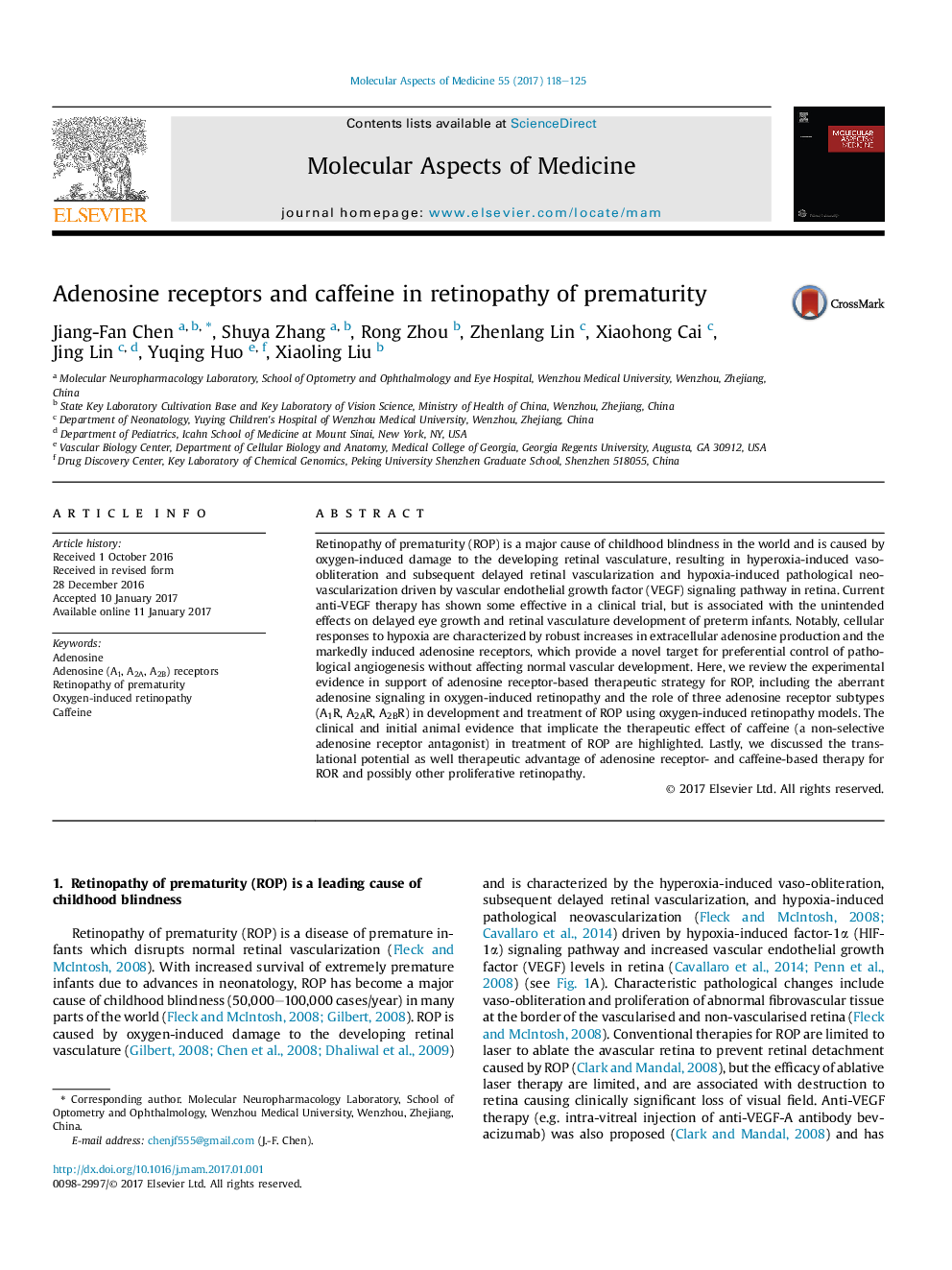| Article ID | Journal | Published Year | Pages | File Type |
|---|---|---|---|---|
| 5513845 | Molecular Aspects of Medicine | 2017 | 8 Pages |
Retinopathy of prematurity (ROP) is a major cause of childhood blindness in the world and is caused by oxygen-induced damage to the developing retinal vasculature, resulting in hyperoxia-induced vaso-obliteration and subsequent delayed retinal vascularization and hypoxia-induced pathological neovascularization driven by vascular endothelial growth factor (VEGF) signaling pathway in retina. Current anti-VEGF therapy has shown some effective in a clinical trial, but is associated with the unintended effects on delayed eye growth and retinal vasculature development of preterm infants. Notably, cellular responses to hypoxia are characterized by robust increases in extracellular adenosine production and the markedly induced adenosine receptors, which provide a novel target for preferential control of pathological angiogenesis without affecting normal vascular development. Here, we review the experimental evidence in support of adenosine receptor-based therapeutic strategy for ROP, including the aberrant adenosine signaling in oxygen-induced retinopathy and the role of three adenosine receptor subtypes (A1R, A2AR, A2BR) in development and treatment of ROP using oxygen-induced retinopathy models. The clinical and initial animal evidence that implicate the therapeutic effect of caffeine (a non-selective adenosine receptor antagonist) in treatment of ROP are highlighted. Lastly, we discussed the translational potential as well therapeutic advantage of adenosine receptor- and caffeine-based therapy for ROR and possibly other proliferative retinopathy.
